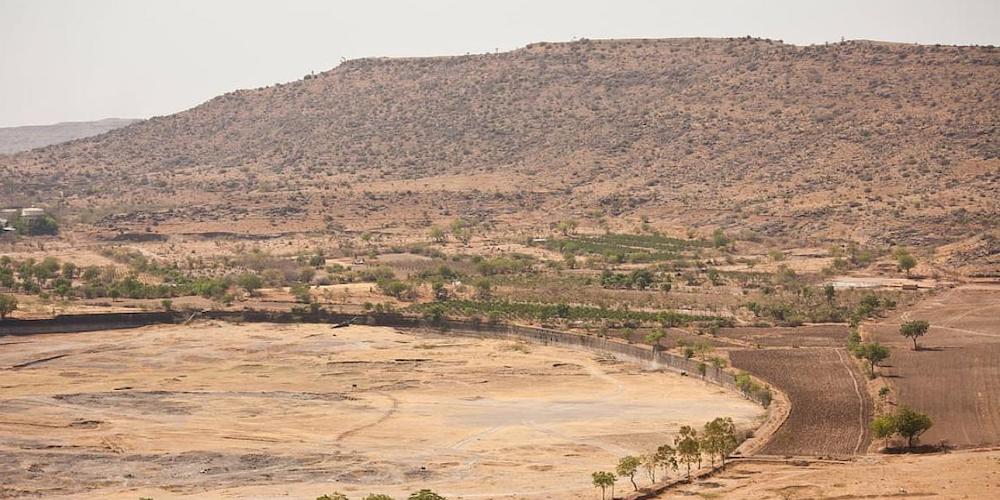How to increase climate resilience in semi-arid farming systems

WOTR study throws important new findings
The W-CReS (WOTR Centre For Resilience Studies) and the researchers from the Netherlands’ Wageningen University have undertaken a thorough investigation that has revealed important insights for improving climate resilience in semi-arid farming systems. The study spanned 15 years and included two Maharashtrian case studies, looking at the effectiveness of different interventions and how they affected water resources, soil health, agricultural productivity, and community well-being.
The results of the study
The study emphasizes the need to give equal weight to agricultural productivity and adaptive capacities. Long-term recipiency to climate change is increased by ignoring the development of adaptive capacities and concentrating only on sprinkling infrastructure without demand-side management. The study emphasizes the value of participatory decision-making, capacity building, and community participation in fostering climate resilience.
The study showed that the adoption of water stewardship programs, food, and nutrition security interventions, and climate-resilient agriculture led to successful results in terms of climate resilience indicators. The interventions focused on increasing local community understanding and resource management capability.
The report drives immediate attention to be paid to non-farm livelihoods in techniques for rural development at both the national and state levels. One way to grow equity, diversify income sources, and reduce exposure to and risk from climate variability is to prioritize the needs of small farmers, landless households, and marginalized populations.
The study emphasizes the significance of having access to technology, services that provide climatic information, and advisories that are helpful to farmers. There are obstacles in the way of attempts to provide regional, crop-specific, and user-friendly advisories, such as technology barriers and the requirement to take into account the behavioral preferences of farmers, especially those from economically disadvantaged backgrounds.
Arjuna Srinidhi, the lead author shares a review of the study, saying, “Our research highlights the complexity of enhancing climate resilience in semi-arid farming systems. It underscores the need for a context-specific and multi-pronged approach that prioritizes the health of the ecosystem, participatory and inclusive decision making, diversifying income sources and includes a focus on monitoring, evaluation and learning within the design of all interventions.”
For development professionals, policymakers, and stakeholders interested in rural development and natural resource management, the study’s summary has major ramifications. We can successfully address the problems faced by farming communities in the context of climate change by incorporating these results into evidence-based policy and encouraging inclusive and adaptable decision-making. A special edition of the journal named “Water resource management in Agriculture for achieving food and water security under climate change in Asia” will be publishing the study soon.

Conclusion
The study aimed to assess how agricultural development interventions affected the farming systems’ climatic adaptability in semi-arid India. To do this, we first have to check the climate resilience of two case studies: one in which interventions focused on enhancing agricultural productivity and irrigation infrastructure, and another in which interventions aimed at growing agricultural productivity and the development of adaptive capacities. After that, we have driven a content analysis of stakeholder interactions to understand more about how interventions affected the resilience of the system to climate change. We discovered that productivity-focused measures alone had little effect on the farming system’s overall resilience. However, when these productivity-enhancing interventions were linked with those related to livelihood diversification, water management, soil health, and food and nutrition security, along with monitoring, evaluation, learning, and adaptive decision-making, improvements in the indicators of climate resilience were observed.
A greater susceptibility to variations in rainfall patterns and increased stress on the few water resources in these semi-arid farming systems have also resulted from the imbalanced concentration on agriculture. While initiatives like water stewardship, climate-resilient farming, and boosting FPO can guarantee better management of natural resources and greater financial returns, tackling equity concerns to lessen the vulnerability to climate change will require stronger government support to improve non-farm livelihoods.
We also discovered that the 15-year study duration and the evaluation of numerous treatments allowed for a more comprehensive assessment of climate resilience that took into consideration a variety of variables, including water access, soil health, and equity concerns. By evaluating both the positive and negative contributions of the interventions on different system functions and resilience attributes, this approach is also helpful in considering synergies and trade-offs between interventions, providing a nuanced understanding of the contributors to the resilience of the farming systems.
Policy recommendations
– Agricultural development interventions should be planned considering ecosystem health, adaptive capacities, and governance arrangements;
– FPOs should be promoted to improve profitability and empowered decision-making;
– Access to climate information services should be facilitated;
– Income sources should be diversified with a focus on non-agrarian livelihoods; and
– Monitoring, evaluation, and learning components should be embedded within all interventions.
These policy recommendations can support the ongoing efforts of the Government of India and the National Rainfed Area Authority (NRAA) to enhance the ability of farming systems to cope with evolving challenges, including building resilience to climate change.


